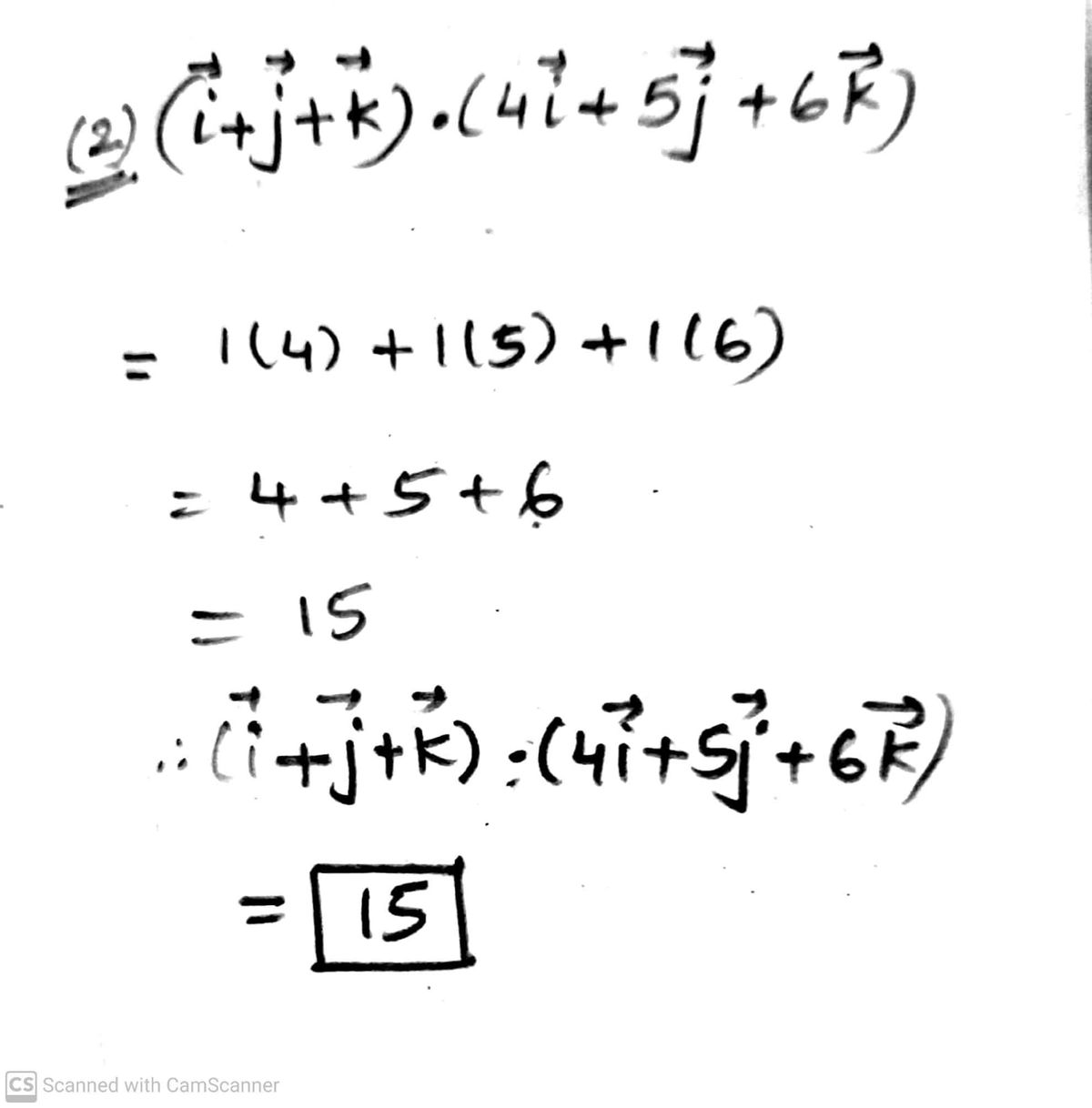Calculus: Early Transcendentals
8th Edition
ISBN:9781285741550
Author:James Stewart
Publisher:James Stewart
Chapter1: Functions And Models
Section: Chapter Questions
Problem 1RCC: (a) What is a function? What are its domain and range? (b) What is the graph of a function? (c) How...
Related questions
Question
evaluate the dot product.

Transcribed Image Text:2. \((\vec{i} + \vec{j} + \vec{k}) \cdot (4\vec{i} + 5\vec{j} + 6\vec{k})\)

Transcribed Image Text:**4. \((2\mathbf{i} + 5\mathbf{k}) \cdot 10\mathbf{j}\)**
This problem involves calculating the dot product of two vectors. The expression contains the vector \((2\mathbf{i} + 5\mathbf{k})\) and the vector \(10\mathbf{j}\). Here, \(\mathbf{i}\), \(\mathbf{j}\), and \(\mathbf{k}\) are unit vectors along the x, y, and z axes, respectively.
### Explanation:
- **Vectors and Unit Vectors**: A vector in three-dimensional space can be expressed using the unit vectors \(\mathbf{i}\), \(\mathbf{j}\), and \(\mathbf{k}\). Each unit vector denotes the direction along one of the axes.
- **Dot Product**: The dot product of two vectors is calculated by multiplying their corresponding components and then summing those products. The dot product of perpendicular vectors is zero.
### Calculation:
Given \((2\mathbf{i} + 5\mathbf{k})\) and \(10\mathbf{j}\):
1. **Components**:
- \((2\mathbf{i} + 5\mathbf{k})\) has components \((2, 0, 5)\).
- \(10\mathbf{j}\) has components \((0, 10, 0)\).
2. **Dot Product**:
- \(2 \cdot 0 + 0 \cdot 10 + 5 \cdot 0 = 0\).
Therefore, the dot product is zero. This indicates that the vectors are perpendicular in the space they occupy, resulting in no contribution in the direction of each vector.
Expert Solution
Step 1

Step by step
Solved in 2 steps with 2 images

Recommended textbooks for you

Calculus: Early Transcendentals
Calculus
ISBN:
9781285741550
Author:
James Stewart
Publisher:
Cengage Learning

Thomas' Calculus (14th Edition)
Calculus
ISBN:
9780134438986
Author:
Joel R. Hass, Christopher E. Heil, Maurice D. Weir
Publisher:
PEARSON

Calculus: Early Transcendentals (3rd Edition)
Calculus
ISBN:
9780134763644
Author:
William L. Briggs, Lyle Cochran, Bernard Gillett, Eric Schulz
Publisher:
PEARSON

Calculus: Early Transcendentals
Calculus
ISBN:
9781285741550
Author:
James Stewart
Publisher:
Cengage Learning

Thomas' Calculus (14th Edition)
Calculus
ISBN:
9780134438986
Author:
Joel R. Hass, Christopher E. Heil, Maurice D. Weir
Publisher:
PEARSON

Calculus: Early Transcendentals (3rd Edition)
Calculus
ISBN:
9780134763644
Author:
William L. Briggs, Lyle Cochran, Bernard Gillett, Eric Schulz
Publisher:
PEARSON

Calculus: Early Transcendentals
Calculus
ISBN:
9781319050740
Author:
Jon Rogawski, Colin Adams, Robert Franzosa
Publisher:
W. H. Freeman


Calculus: Early Transcendental Functions
Calculus
ISBN:
9781337552516
Author:
Ron Larson, Bruce H. Edwards
Publisher:
Cengage Learning